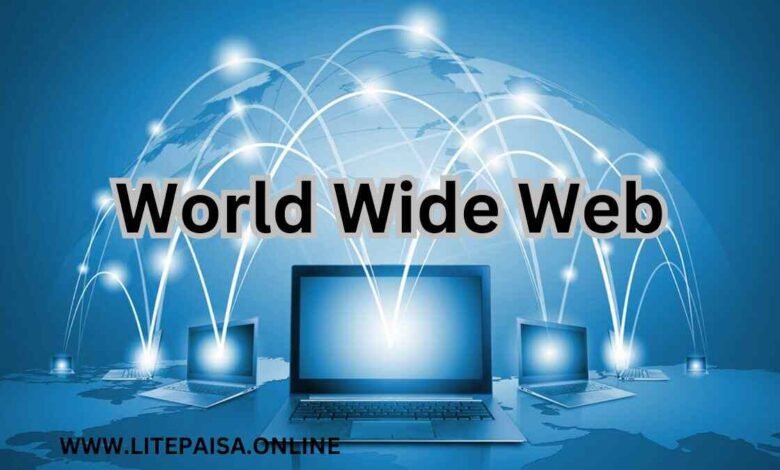
World Wide Web In today’s rapidly evolving digital landscape, understanding the intricacies of the World Wide Web (WWW) is not merely an advantage—it is an essential component of success for businesses, entrepreneurs, and individuals alike. As the web continues to grow exponentially, the ability to effectively navigate, utilize, and capitalize on its vast potential can set you apart from the competition. This article provides a comprehensive, in-depth exploration of the World Wide Web, offering actionable insights and strategies to help you master this powerful tool.
What is the World Wide Web?
The World Wide Web, often called “the web,” is a vast network of interconnected documents and multimedia content, accessible via the internet. World Wide Web Created by Tim Berners-Lee in 1989, the web has revolutionized how we access and share information. It operates on a client-server model, where web browsers (clients) request information from web servers, which then deliver the requested content.
The Architecture of the World Wide Web
Understanding the architecture of the World Wide Web is crucial for anyone looking to harness its power.
HTML structures content and defines the layout, ensuring that text, images, and multimedia elements are displayed correctly on web browsers.
HTTP (Hypertext Transfer Protocol): This protocol is used to transfer data between the web server and the client.
URLs (Uniform Resource Locators): A URL is the address used to access a specific resource on the web. It is the combination of a protocol (such as HTTP or HTTPS), a domain name, and an optional path that points to a specific page or file.
The Evolution of the World Wide Web

To fully appreciate its current state and future potential, it’s important to understand its key stages of evolution:
Web 1.0: The Static Web
These websites were essentially digital brochures, providing information without much interaction. Content was primarily text-based, and users had limited ability to interact with the pages they visited.
Web 2.0: The Interactive Web
The transition to Web 2.0 marked a significant shift in how we use the web. Websites became more interactive, allowing users to contribute content, engage in discussions, and share information with others. This period saw the rise of blogs, forums, and social networking sites, fundamentally changing how we communicate online.
Web 3.0: The Semantic Web
Web 3.0, often referred to as the Semantic Web, represents the next phase of the web’s evolution. It focuses on and understandable to both humans and machines. Web 3.0 aims to create a more intelligent and interconnected web, where data is linked in the ways that enable more sophisticated applications and services.
Making Information More Accessible World Wide Web

The World Wide Web has had a profound impact on nearly every aspect of modern life. From how we communicate and conduct business to how we access information and entertain ourselves, the web has reshaped our world in countless ways.
Communication and Connectivity
The web has revolutionized communication, making it possible to connect with people around the world instantly. Email, social media, video conferencing, and instant messaging are just a few examples of how the web has transformed the way we interact with others. These tools have not only made communication faster but also more accessible, breaking down geographical barriers and enabling global collaboration.
Business and Commerce World Wide Web
E-commerce has become a dominant force in the global economy, thanks to the web. Businesses of all sizes can now reach a global audience, offering products and services to customers around the world. Online marketplaces, digital marketing, and payment gateways have made it easier than ever for businesses to operate and thrive online. The web has also given rise to new business models, such as subscription services, on-demand platforms, and the gig economy.
Access to Information
Search engines like Google have made it easy to find information on virtually any topic, from academic research to DIY tutorials. Online education platforms have also emerged, offering courses and certifications that can be accessed from anywhere in the world.
Entertainment and Media World Wide Web
The web has transformed the entertainment industry, changing how we consume music, movies, and other forms of media. The rise of user-generated content has also given individuals the power to create and share their own media, reaching audiences worldwide.
Harnessing the Power of the World Wide Web for Success

To succeed in today’s digital age, it is essential to harness the power of the World Wide Web effectively. Whether you’re an individual looking to build a personal brand or a business aiming free to reach a wider audience. Understanding and leveraging the web’s potential is key.
Building a Strong Online Presence
Building a strong online presence involves creating and maintaining a website, engaging on social media, and producing valuable content. A well-designed website that is optimized for search engines (SEO) can help you attract visitors and convert them into customers. Social media platforms provide a way to connect with your audience, share your message, and build a community around your brand.
Content is King: Creating Valuable Content
Content is at the heart of the web. Creating high-quality, valuable content is essential for attracting and retaining an audience. Content that is informative, entertaining, and relevant to your audience’s needs is more likely to be shared and engaged increasing your visibility and reach.
Search Engine Optimization (SEO): Maximizing Visibility
This involves researching and using relevant keywords, optimizing your website’s structure and speed, and building backlinks from reputable sites.
Leveraging Social Media for Growth World Wide Web
Social media is a powerful tool for reaching and engaging with your audience. By leveraging platforms like Facebook, Twitter, Instagram, and LinkedIn, you can share your content, interact with followers, and build a loyal community. Consistency and authenticity are key to building a successful social media presence.
E-Commerce: Expanding Your Reach
For businesses, e-commerce offers a way to reach customers beyond geographical boundaries. Setting up an online store allows you to sell products and services to a global audience. Integrating payment gateways, ensuring secure transactions, and providing excellent customer service are critical components of a successful e-commerce strategy.
Analytics and Data-Driven Decision Making

By analyzing website traffic, user behavior, and other metrics, you can gain insights into what is working and what needs improvement. Tools like Google Analytics and social media insights can help you track your performance, and adjust your strategies accordingly.
The Future of the World Wide Web
As we look to the future, the World Wide Web will continue to evolve, driven by advancements in technology and changes in how we interact with the digital world. The rise of artificial intelligence, the Internet of Things (IoT), and blockchain technology are just a few of the trends that will shape the web’s future.
Artificial Intelligence and Automation
AI is already transforming how we interact with the web, from personalized recommendations to chatbots that provide customer support. As AI continues to advance, we can expect even more sophisticated applications, that enhance user experiences and streamline online processes.
The Internet of Things (IoT) World Wide Web
The IoT refers to the growing network of interconnected devices that communicate and exchange data. This technology has the potential to create a more connected and efficient world, with smart homes, cities, and industries all leveraging the power of the web.
Blockchain and Decentralization
Blockchain technology offers the promise of a more decentralized web. World Wide Web This could lead to greater security, transparency, and control over personal data.
Conclusion: Embracing the Power of the Web
The World Wide Web is an ever-evolving entity that continues to shape our world in profound ways. By understanding its history, architecture, and impact. By harnessing its potential through effective strategies, you can position yourself for success in the digital age.
Learn More: Smart Life Home Assistant





One Comment